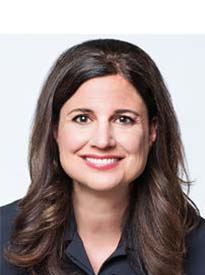This is the second in a three-part series on how advisors can reduce the risk of being sued. This column is on the importance of having a proper process for completing the know-your-client form. The first column, published on Dec. 19, 2016, focused on how to scrutinize prospective clients carefully. The third column, published on Feb. 13, 2017, will explore the importance of monitoring client changes.
There are many things an advisor can do to avoid being sued, but the most common reason clients sue is because their portfolios were riskier than they wanted — even if they were consistent with the risk tolerance set out on their know-your-client (KYC) forms. So, clear communication is the key to avoid getting sued and a strong paper trail is the basis upon which to mount a strong defence if you ever do.
The most important conversations you have with your clients are the ones before their accounts are even opened. It’s during these discussions that you collect the necessary information from clients to prepare the KYC form, which is also commonly referred to as the new account application form or the new client account application form.
If you just use the KYC form as a guide and tick off the boxes as you review each item with clients, this is how the conversation is likely to go: “Is your risk tolerance low, medium or high?” The client would likely give you a one-word answer — “low,” “medium” or “high.” With this question and brief answer, you would not have had a dialogue or explored what the client meant by “low,” “medium” or “high.”
In fact, you have left yourself exposed to clients who might later deny the contents of the KYC form, alleging it was incorrect when they sue you and your dealer for unsuitable investments. Furthermore, you would have no notes or information of how that risk tolerance was determined other than to say this is what the client told you — and that’s not enough to prove you fulfilled your professional obligation.
Even more important, if there was no dialogue and all you did was this superficial exercise of merely ticking off the boxes on the KYC form, you didn’t actually get to know the client. You need to be inquisitive rather than just filling out a form to get the account opened.
For each item on the KYC form you need to have a conversation with the client to really understand him or her. You need to find out what makes this client tick and how he or she thinks and what are this client’s values? What makes this client nervous? How is he or she motivated by money? What are his or her personal financial goals?
Let’s use me as an example. If an advisor merely asked me the risk tolerance question, I would say my risk tolerance is low. I don’t take risks in my life or with my money. I don’t like taking risks with my hard-earned savings and don’t like high-risk stocks or high-risk anything — yes, I’m boring.
However, my advisor didn’t ask me the question; instead, we explored my financial situation through extensive conversations. No doubt, my advisor took detailed notes of our conversations and has the proof that I bought into the plan to have a medium-risk portfolio for all the reasons played back to me that I expressed, which are just too long for this column. Of course, I could have said no to a medium-risk portfolio and insisted on low risk, but I didn’t. (Also, I’m somewhat knowledgeable, which means my advisor can prove that I understood what I was told and what I signed.)
It’s very important to manage all clients’ expectations through clear communication and ensure that you have proof of having discussions with clients before you tick off the boxes on the KYC form to ensure that the conclusions on the form are accurate and the client understands why you have indicated them as such. Just ticking off the boxes and not collecting the necessary information leads to lawsuits; clear communication and managing clients’ expectations is the way to avoid getting sued.
